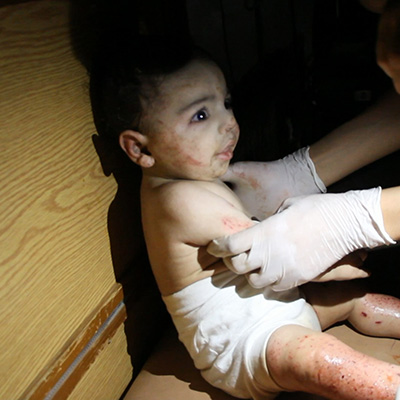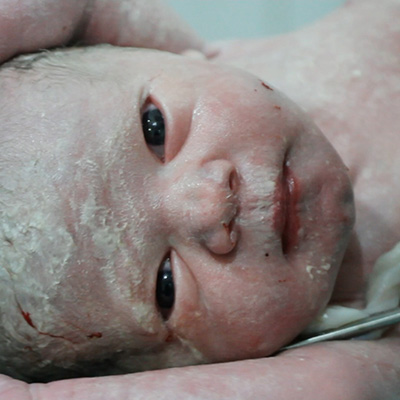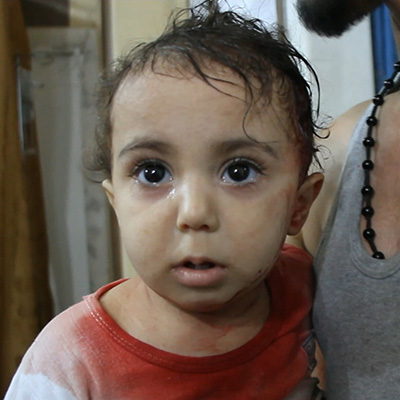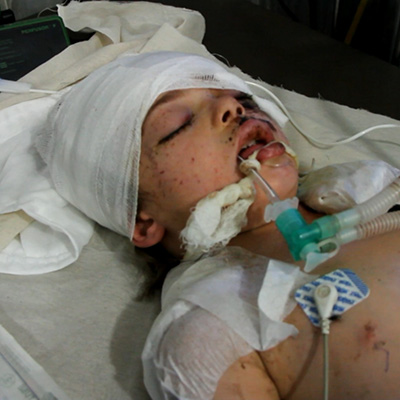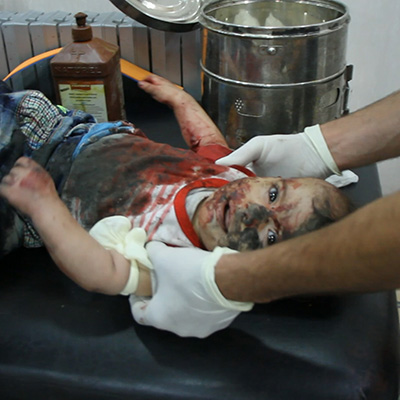For over five years the world has watched as a protest movement in Syria has turned into the bloodiest war of our century. Watched because almost every act of violence and its horrific consequences has been captured on video and uploaded for the world to see.
The Barrel Bomb Baby 6:17
These hundreds of thousands of online clips detail the destruction and death of a country, and yet its hellish descent continues. The coverage of a war can be one of the key factors that prompts world leaders to take political and military action to try and end it. In Syria, the cruel inverse seems to be the rule; the more we see of the violence and suffering the less resolve there seems to be to end the violence.
The Gardener 6:05
The most intense battle of this war has been the struggle for Aleppo, the country’s biggest city. It has been been fought over by all sides, by the multiple Islamist militias of the opposition including al Nusra and ISIS, and of course the Syrian Arab Army. Districts have been overrun, shelled, cowed by snipers, attacked by suicide bombers, strewn with chemicals, and bombed relentlessly from the air. But of all the death and crimes and massacres on all sides, the aerial bombardment of Eastern Aleppo by the Syrian and Russian armies, an asymmetric contest between barrel bomb and human, has stood out.
The Brothers 3:35
We are now familiar with its horrific choreography, rescuers running to try and save people, screaming relatives, dusty, shocked or lifeless children held up for the camera. These attacks have happened for so long that coverage of them in the media outside of Syria now ebbs and flows. If the death toll is on a terrible scale or produces a defining tragic image of a child’s despair, coverage is guaranteed. But with safe access denied to objective independent journalists from outside, for the media the choice of what to run has become governed by factors which include fatigue and familiarity.
The Architect 5:04
During the summer we made a conscious decision to try and report what was happening in Syria, and particularly in Aleppo, on a daily basis. One person, Wa'ad al Kateab, has made this possible. A year ago she made a film of hope about a young boy who dreamed of rebuilding his city. Since the summer and the relentless aerial bombardment of her Eastern Aleppo she has filmed the bloody scenes of the hospital her husband works in, documented the tragedy of families, and revealed the humanity of many of those trapped with her inside one of the world's most dangerous places. She has allowed us to tell the story of Eastern Aleppo as she sees it, and we have created this space to focus on her incredible work and that of many others, and on the City of Aleppo.
Ben de Pear, Editor – Channel 4 News, October 2016
